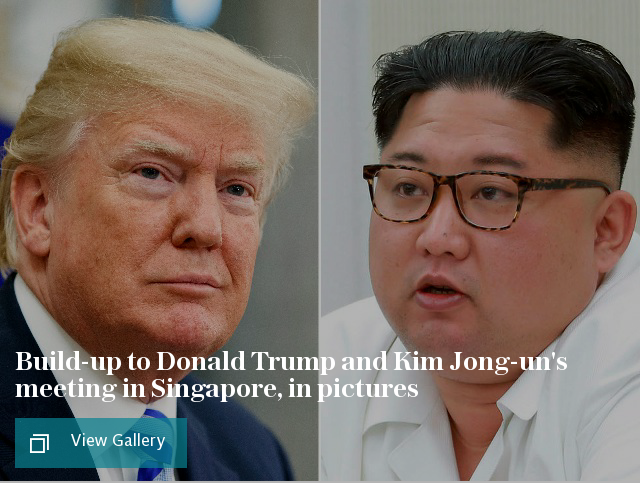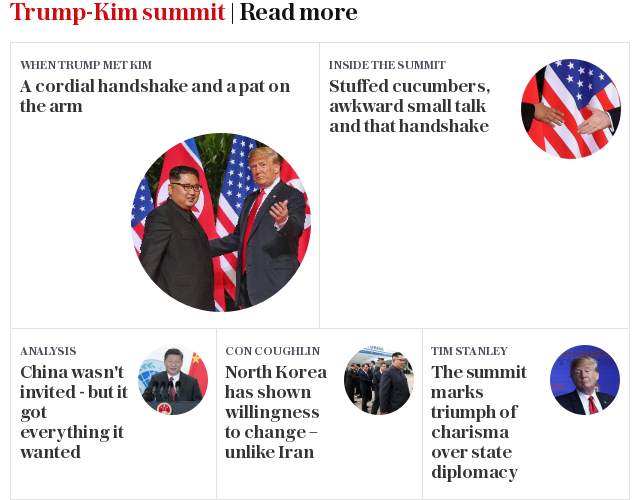What next for North Korea-US talks and the steps to denuclearisation

Donald Trump has demanded North Korea denuclearise and Kim Jong-un has said he is committed to doing so.
But what happens next, and what the two sides even mean by "denuclearisation," remain open questions.
When will denuclearisation happen?
As Mr Trump put it this will take a "long time". The process, if successful, would probably only be completed well after he leaves office.
There will probably be more high profile meetings and, depending how those go, Kim may make his first trip to the US and be received at the White House.

But the challenge of planning the details of the disarmament of North Korea will pass to Mike Pompeo, Mr Trump's secretary of state.
According to diplomats who dealt with North Korea in previous negotiations he can expect the initial euphoria to be followed by years of evasiveness and deception.
What does the US mean by denuclearisation?
The US standard for denuclearisation is CVID - which stands for complete, verifiable, irreversible dismantlement of the North Korean programme.
That is also the terminology used by the UN Security Council for more than a decade.
It means North Korea destroying anything pertaining to such a programme and having it done under observation by independent inspectors.
As one diplomat put it: "Any unilateral undertakings by the North Koreans would probably not be worth the paper they're written on."
Inspectors from the International Atomic Energy Agency were kicked out of North Korea in 2002 and they would have to be allowed back in.
As well as confirming the destruction of all nuclear facilities the inspectors would have to be satisfied that they could never be restarted.
According to Moon Jae-in, the South Korean president, there is no difference between the South Korean and US interpretations.
However. Mr Moon has also said he recognises it may not happen quickly and he is open to exploring "other steps along the way".

What does Kim Jong-un mean by denuclearisation?
It was notable that the declaration signed by Kim and Mr Trump referred to "working towards complete denuclearisation of the Korean Peninsula".
This is the same language Kim had stuck to before the meeting, and indicates his interpretation includes the US presence in South Korea.
The US has not stationed nuclear weapons in South Korea since 1992 but North Korea appears to include the 28,000 US troops there as a potential nuclear threat.
It says the basis for its nuclear arsenal is to defend itself against the threat of invasion by a US-backed South Korea.
China shares North Korea's view. "China is not really demanding or requiring that North Korea dismantle its weapons, but wants to make sure that a nuclear free Korean peninsula is the ultimate goal,” said Zhao Tong, a North Korea expert at the Carnegie-Tsinghua Centre in Beijing.
Mr Trump's decision to end US-South Korean "war games" in the region would be a step towards what the North Koreans see as denuclearisation of the peninsula.
So has Kim really said anything new?
Not yet. As long ago as 1991 North and South Korea signed a "joint declaration of the Denuclearisation of the Korean Peninsula".. That was the same phrase used this time.
Previous efforts fell apart. The question now is whether Kim himself has a different view. Mr Trump believes he does.

What are the chances of full denuclearisation?
"Utopian, really pie in the sky." according to Adam Cathcart, a North Korea expert at Leeds University.
Many experts predict that, although the two sides have agreed on the principal of denuclearisation, as they did in 2005, it will never be fully implemented.

What is the most probable long term outcome?
According to many analysts that North Korea agrees to freeze weapons and missile tests,and ultimately offers to limit its nuclear programme without completely eliminating it in an attempt to get sanctions lifted.
Could we go back to potential war?
Yes. John Bolton, Mr Trump’s new national security adviser, John Bolton, recently said: "We expect real denuclearisation, not talks about talks about denuclearisation."
If the North Koreans start to stall then any deal could be off.
The Brookings Institution published reactions from 13 of the most respected US-based experts on the crisis, and all but one was critical of the "underwhelming" outcome of the Singapore summit.


